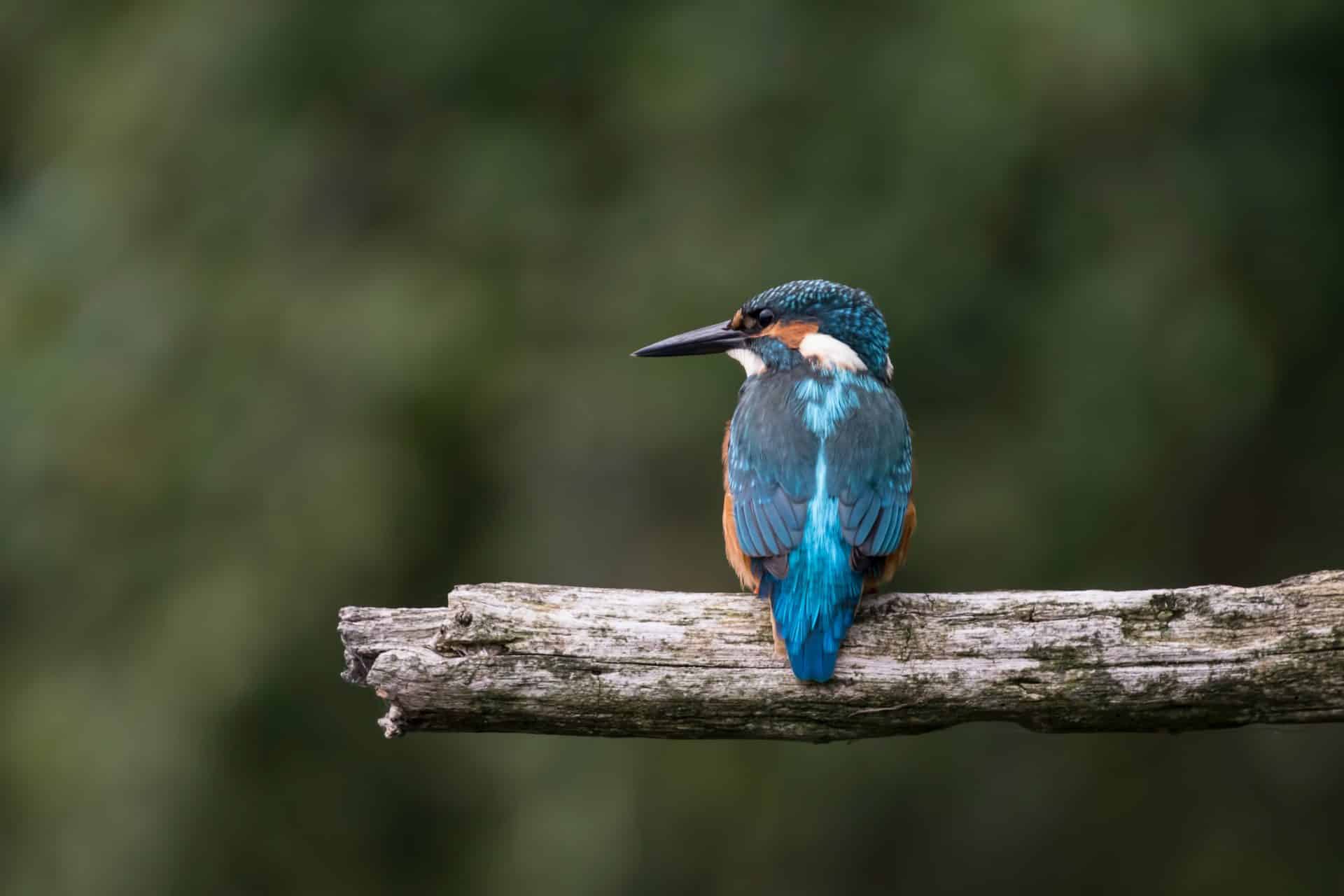Birds
Belted Kingfisher
Ceryle alcyon

Voice: Dry rattling sound, loud and raspy
Belted Kingfishers are one of the most widely distributed birds in North America. In Ohio
kingfisher can be found year round with the availability of open, fish-occupied waters. Belted
Kingfishers can often be seen perching or hovering over water, searching for its primary prey,
small fish. Once a Kingfisher locates a small fish it dives head first vertically or at an angle for
the water, aiming right for the prey. After it catches a fish in is long thick bill, it flies back to its
perch, where it bangs the fish against the branch or trunk of the tree. Eventually when the fish is
stunned or dead, it gives it a little toss in the air, catch it, and swallow it whole. Belted
Kingfishers also prey on crayfish, frogs, tadpoles, and other aquatic dwellers. Later kingfishers,
like owls will regurgitate pellets, with bones and indigestible materials.
Belted Kingfishers are solitary except during the breeding season early April to Mid-July. During
this time males will defend their territory against other kingfishers. When an unidentified
kingfisher intrudes an occupied territory the male becomes very aggressive which results a
rattling vocal air flight which continues until the trespasser vacates. An average territory could be
a little over half mile long.
It can take Belted Kingfishers 3 days to 3 weeks to excavate their nesting tunnel. The nesting
burrow is located in river bank or lakeside bluff. When they are building their tunnel, both males
and females chip away at the dirt with their long thick bills. They then use their feet in which two
of their toes are fused together. These toes act as a plow for pushing the loose dirt out of the
tunnel. The tunnel entrance slopes upwards, is 3.5 to 4 inches wide and can be up to six feet long.
At the end of the tunnel is a small almost perfectly spherical chamber for egg laying.
The female kingfisher lays usually lays 6 to 8 glossy white eggs. Both the male and the female
incubate the eggs for 23-24 days. The young are altricial and naked. The chicks bristly feather
quills grow in about a week and their eyes open in about two weeks. Young are tended to by both
parents. The adults feed them regurgitated food. Young leave the nest 30-35 days after hatching.
Surprisingly, human activity such as digging gravel pits and building roads have helped the
Belted Kingfisher by creating banks where kingfishers can build nests and expand their breeding
range. Kingfishers appear to be less susceptible to environmental pollutants than other fish-eating
birds however excellent water quality must be protected for successful fish populations which the
Belted Kingfisher relies on for survival and reproduction.
What you can do? Protect our watersheds. A watershed is a region draining into a river, river
system, or other body of water. Anything harmful like home toxins, automotive fluids, fertilizers
that run off land can eventually get into part or all of a watershed. These pollutants can have life
threatening effects on organisms in or around the river like our Belted Kingfisher. To learn more
about watersheds and protecting rivers check out Holden’s Riverkeepers program.
Best Location to View: Corning Lake, Molly Offutt Boardwalk, and East Branch of the Chagrin River
Color: Male: stocky, bluish upperparts and necklace; white belly and chin; shaggy crest; long, thick bill. Female: similar with a rust colored band across the chest.
Range: Breeds across most of the US. In winter it vacates northern Canada and colder portions of us to southern warmer areas.
Size: 11-14"



